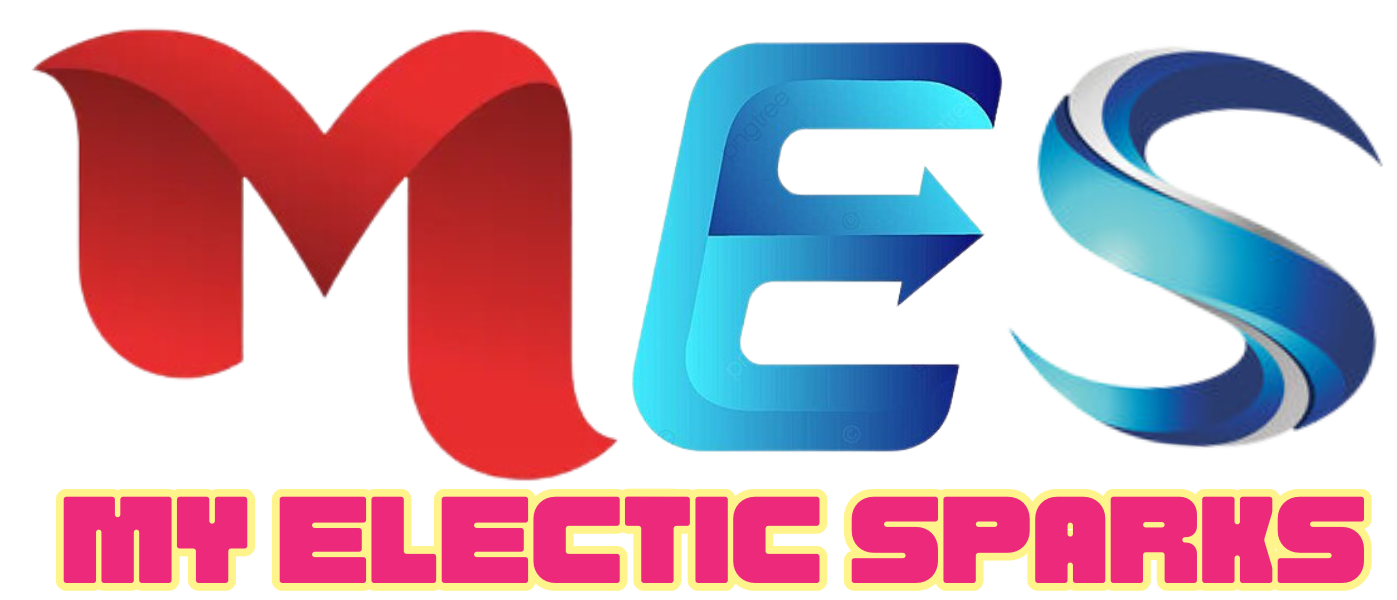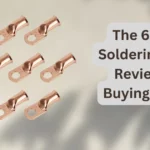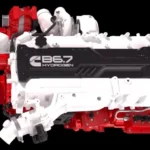
Just a decade back, best 3D printer were massive, expensive machines reserved for big corporations and factories that were largely unknown outside the tiny circle of professionals who designed and built the devices. But, thanks due to their participation in the RepRap free 3D printing revolution, they are now affordable, practical devices for engineers, designers, students, hobbyists, and even interested consumers.
Because the best 3D printer are efficient and valuable, we have compiled some of the top best 3D printer below. These were choosen based on these criteria:
- Printing Dimensions: Whatever type of best 3D printer you’re going to purchase, making sure you check the dimensions of its printing is crucial to make sure you can print large-scale designs should you wish to.
Because of this, there are a variety of printing sizes like 150 mm x 150mm, 100 mm 300 mm x millimetres x 600 millimetres, and many more where the larger printing dimensions are essential for heavy-duty use.
- Materials used to print: The two primary materials for printing 3D models include Poly Lactic Acid (PLA) and Acrylonitrile Butadiene Styrene (ABS). Both thermoplastics change into soft and malleable after heated and frozen after cooling.
It is essential to determine what materials are suitable for the final product. You can then decide the kind of printer to purchase. It is crucial to note that some printers are compatible with both materials. Some will only accept one type.
In the case of filament size 1.75mm (3mm) in size, It’s not a huge factor in the final quality. The most popular printers go with 1.75mm. Therefore, it is recommended to start with 1.75mm.
- Printing Speed: If you’re printing large-sized designs with your best 3D printer, you’ll like to print your designs as quickly as possible. That is why having a printer with the highest printing speed is always a good option. That is because the speed of printing at 150 mm/s is much more efficient than a print speed of 60 millimetres per second.
- Connectivity: To print any of your designs, you’ll have to utilize the many connectivity options available and the control options on your Delta best 3D printer. So, it is recommended to choose best 3D printer with numerous connectivity options, such as USB or SD card slot WIFI, ETHERNET and many more.
Having multiple options for connectivity is always a good thing. If your best 3D Printer comes with a touchscreen, its use will be even more straightforward.
In This article we choose the best 3d printers for beginners, In all of the below products i will recommend flashforge finder 3d printer you can also check its reviews and buying guide.
It should be noted that the below 3d printers are best 3d printer under $500.
Best 3D Printer 2022
[table id=77 responsive=”scroll”/]
[su_divider top=”no” size=”5″]
Best 3D Printer for Small Business:
1. Monoprice Voxel

If you’re trying to get into 3D printing, The Monoprice Voxel best 3D printer is the ideal choice since it prints high-quality images without costing a lot.
The novices will enjoy the heated print base on the Voxel, which means higher-quality prints when using substances like ABS. That is because the top layer of print beds can slide out, also, and it’s able to bend, which makes removing prints an easy task. We also love the Voxel sealed feature, which is essential when you’re considering using the 3D printer in the classroom or at home.
The MP Voxel runs fast printing at speeds that we typically see on higher-end devices. We were also impressed by the quality of prints that accurately recreated details and captured natural soft curves in our tests. There may be minor issues during setup; however, once you’re operational, it’s a breeze. Voxel is the ideal best 3D printer for those looking to try 3D printing in the beginning.
[su_box title=”Best Features” style=”soft” box_color=”#4e4e4e” radius=”9″]
- Printer Type: FFF
- Layer resolution: 400 microns
- Build volume: 6.9 x 6.9 6.9 inches
- Materials used: ABS, PLA, Wood Fill, Copper Fill, Steel Fill, Bronze Fill
- Printer Size: 15.9 x 15.7 x 15 inches
- Printer weight: 19.8 pounds[/su_box]
[i2pc pros_icon=”icon icon-check-5″ cons_icon=”icon icon-check-5″ show_title=”true” title=”Pros & Cons” show_button=”false” pros_title=”Pros” cons_title=”Cons” heading_cons_icon=”icon icon-ban-1″ ][i2pros]It has an excellent print quality.
It has a fast print speed.
It has a heated print bed.[/i2pros][i2cons]Some time it has Wi-Fi connection issues.[/i2cons][/i2pc]
[su_button url=”https://amzn.to/3GD6FbY” target=”blank” style=”bubbles” background=”#ef9c2d” size=”5″ center=”yes” icon=”icon: amazon”]Buy from Amazon[/su_button]
[su_divider]
2. Formlabs Form 3

What can you do after you have the top resin printer? Create something even more impressive, which is exactly what Formlabs has come up with by introducing its brand Form 3 Form 3 best 3D printer. The printer has a slightly bigger print area than in Form 2. Form 2, but the most significant change in this Version is Form 3’s new optics engine. The optics and laser are contained inside a sealed box, ensuring the printer’s reliability as it keeps dust out that could interfere with the path for the laser.
We were able to see that the reliability was evident during our testing of Form 3. We were able to test the reliability of Form 3, as no prints failed to print -an unprecedented feat for us. We also love the concept of Stereolithography with Low Force, and this means Form 3 prints with less force. Form 3 uses less energy when working on the hardened layers of a print that is in process.
The Form 3 is not a cheap 3D printer, but even if you do not need the latest options, Formlabs sells refurbished Form 2 for around $1,000 less. (Your best choice for purchasing the Form 3 or the Formula 2 is to visit Formlabs’ website. Formlabs site.) Designers, artists, and professionals involved in much 3D printing won’t be bothered by the cost since they’ll appreciate the time and effort saved by the reliable Form 3.
[su_box title=”Best Features” style=”soft” box_color=”#4e4e4e” radius=”9″]
- Printer Type: SLA
- Layer resolution: 25 to 300 microns
- Build volume: 7.3 x 5.7 x 5.7 inches
- Materials used: Resin
- Printer Size: 15.9 × 14.8 × 20.9 inches
- Printer weight:38.5 pounds [/su_box]
[i2pc pros_icon=”icon icon-check-5″ show_title=”true” title=”Pros & Cons” show_button=”false” pros_title=”Pros” cons_title=”Cons” heading_pros_icon=”icon icon-ban-1″ heading_cons_icon=”icon icon-ban-1″ ][i2pros]It has excellent print quality.
It support for a range of Formlabs supplied materials.
It supports multiple users and printers.[/i2pros][i2cons]It is expensive.[/i2cons][/i2pc]
[su_button url=”https://amzn.to/3sarUOA” target=”blank” style=”bubbles” background=”#ef9c2d” size=”5″ center=”yes” icon=”icon: amazon”]Buy from Amazon[/su_button]
[su_divider]
3. Monoprice Delta Mini V2

If you’re looking to start your journey into 3D printing, take a look at the Monoprice Delta Mini V2. It’s a low-cost printer yet fully featured and delivers top-quality prints for the cost.
There are some compromises to make, such as having a small build volume compared to other budget best 3D printer, like those from da Vinci Nano. You do have support for a broad range of materials, with Monoprice Delta Mini V2 able to print ABS, PLA, and other types of materials.
It’s rare to find this level of versatility even in the smallest of devices.
It’s hard to beat the price of the Monoprice Delta Mini V2, particularly for people who are just starting with 3D printing.
[su_box title=”Best Features” style=”soft” box_color=”#4e4e4e” radius=”9″]
- Printer Type: FFF
- Layer resolution: 40 to 200 microns
- Build volume: 4.7 x 4.3 x 4.3 inches
- Materials used: PLA, PLA+, ABS, Wood Fill, Copper Fill, Steel Fill,
- Printer Size: 18.9 x 17.3 x 14.2 inches
- Printer weight: 2.2 pounds [/su_box]
[i2pc pros_icon=”icon icon-check-3″ show_title=”true” title=”Pros & Cons” show_button=”false” pros_title=”Pros” cons_title=”Cons” heading_pros_icon=”icon icon-thumbs-down” heading_cons_icon=”icon icon-thumbs-down” ][i2pros]It prints PLA, ABS, PETG, and other materials.
It has excellent print quality for the price.
It is budget product.[/i2pros][i2cons]Smaller build volume than other low-cost printers.
Software has some rough edges.[/i2cons][/i2pc]
[su_button url=”https://amzn.to/33CBZcW” target=”blank” style=”bubbles” background=”#ef9c2d” size=”5″ center=”yes” icon=”icon: amazon”]Buy from Amazon[/su_button]
[su_divider]
4. Photon Mono X

Although it is as great as Form 3 is, it’s costly. Printers such as the one that is now gone out reduced the cost of SLA printing; however, this Photon Mono X offers an even more affordable alternative. In addition, the outcomes are pretty impressive. We observed that the Photon Mono X created high-quality SLA prints quickly despite printing errors.
Printing enthusiasts who love 3D will appreciate the vast print area with 331 cubic centimeters. It’s imposing considering the Photon MonoX’s tiny dimensions. It’s only 18 inches high and less than 11 inches in width. So it can easily fit into an at-home workshop or similar space.
SLA printing can be an unclean, smelly, and dirty business. However, Photon Mono X Photon Mono X helps lower the price of this method without requiring you to make any sacrifices.
[su_box title=”Best Features” style=”soft” box_color=”#4e4e4e” radius=”9″]
- Printer Type: SLA
- Layer resolution: 0.01-0.15mm
- Build volume: 9.6 X 7.5 X 4.6 inches
- Materials used: Resin
- Printer Size: 18 X 11.4 X 10.6 inches
- Printer weight: 23.7 pounds [/su_box]
[i2pc pros_icon=”icon icon-check-3″ cons_icon=”icon icon-thumbs-down” show_title=”true” title=”Pros & Cons” show_button=”false” pros_title=”Pros” cons_title=”Cons” heading_cons_icon=”icon icon-thumbs-down” ][i2pros]It fast printer with high-quality output.
It costs a fraction of what other SLA printers cost.[/i2pros][i2cons]It has Slicing software produces inconsistent supports.
It has Some print failures.[/i2cons][/i2pc]
[su_button url=”https://amzn.to/31YOQpt” target=”blank” style=”bubbles” background=”#ef9c2d” size=”5″ center=”yes” icon=”icon: amazon”]Buy from Amazon[/su_button]
[su_divider]
5. FlashForge Adventurer 4

If you’re ready to step over best 3D printer for the first time, consider FlashForge Adventurer 4. FlashForge Adventurer 4. It provides a simple printing experience that is free of glitches and complexities.
The Adventurer 4 comes with swappable print nozzles that can control the size of layers of the prints and take on various temperatures. That makes it one of the most flexible best 3D printer we’ve tested since this Adventurer 4 can take on a wide range of print materials. However, the print speed is average for the typical best 3D printer of this kind.
It’s worth noting that Adventurer 4 produced excellent quality prints during our tests. And, with a low budget, you can get an exceptionally elegant printer that doesn’t need to shell out a lot of money.
[su_box title=”Best Features” style=”soft” box_color=”#4e4e4e” radius=”9″]
- Printer Type: FFF
- Layer resolution: 0.1 to 0.4mm
- Build volume: 9.8 x 8.6 x 7.9 inches
- Materials used: ABS, PLA, PC, PETG, PLA-CF
- Printer Size: 21.3 x 19.7 x 18.5 inches
- Printer weight: 57.3 pounds [/su_box]
[i2pc pros_icon=”icon icon-check-3″ cons_icon=”icon icon-thumbs-down” show_title=”true” title=”Pros & Cons” show_button=”false” pros_title=”Pros” cons_title=”Cons” heading_cons_icon=”icon icon-thumbs-down” ][i2pros]It has swappable nozzles provide material flexibility.
It has a handles multiple materials with ease.
It has a good price.[/i2pros][i2cons]It has no automatic bed leveling and filament loading.
It has a changing nozzle is rather a tricky process.[/i2cons][/i2pc]
[su_button url=”https://amzn.to/32h3oAA” target=”blank” style=”bubbles” background=”#ef9c2d” size=”5″ center=”yes” icon=”icon: amazon”]Buy from Amazon[/su_button]
[su_divider]
6. LulzBot Mini 2

This new version of LulzBot Mini doesn’t miss a step in reproducing what made the original an excellent best 3D printer. You will get a printer with a range of capabilities enough to deal with various materials for a low cost if you’re willing to move up from printers geared towards novices.
The LulzBot Mini 2 surpasses its predecessor in that it offers more space to work with and the latest printer that is more flexible and capable of handling more types of materials. The tests we conducted found that Mini 2 churns out prints faster than the first model, with high quality on the final product.
It is possible to hunt for this LulzBot Mini 2, and finding the price could be a problem because the printer is not available. It’s still available from 3D printing retailer Dynamism. That is a lower price than what we’ve seen from other retailers, suggesting that the supplies for this printer might be running out.
[su_box title=”Best Features” style=”soft” box_color=”#4e4e4e” radius=”9″]
- Printer Type: FFF
- Layer resolution: 50 – 400 microns
- Build volume: 7 x 6.3 x 6.3 inches
- Materials used: PLA, TPU, ABS
- Printer Size: 4 x 18 x 13 inches
- Printer weight: 19. 9 pounds [/su_box]
[i2pc pros_icon=”icon icon-check-3″ cons_icon=”icon icon-thumbs-down” show_title=”true” title=”Pros & Cons” show_button=”false” pros_title=”Pros” cons_title=”Cons” heading_cons_icon=”icon icon-thumbs-down” ][i2pros]It prints are fast and of high quality.
It supports a wide range of materials.
It printing is quiet.[/i2pros][i2cons]It is more expensive than many comparable models.[/i2cons][/i2pc]
[su_button url=”https://amzn.to/3GPdsj4″ target=”blank” style=”bubbles” background=”#ef9c2d” size=”5″ center=”yes” icon=”icon: amazon”]Buy from Amazon[/su_button]
[su_divider]
7. XYZ da Vinci Nano

Now that the Monoprice Delta Mini V2 best 3D printer now in stock in its the da Vinci Nano from XYZprinting is no longer able to claim that it’s the most affordable 3D printer on the market. It’s still a great bargain if you locate it in the form of da Vinci Nano. (That might take some effort since the printer is in a surprisingly scarce supply.)
Its da Vinci is relatively compact and is roughly what a breadmaker would be; however, it boasts a large-for-its size built-in surface of 4.7 inches across both sides. (That’s more than Monoprice’s budget printer has.) The door can be closed off the printing area and reduce some noise from printing. However, opening the door does not end the print process.
Da Vinci Nano is a superb best 3D printer. Da Vinci Nano is no speed demon, but other top 3D printers print objects much shorter. However, the prints it created during our tests were of excellent quality. The software that comes with the best 3D printer is also straightforward, which is another reason to recommend using the da Vinci Nano for classroom settings.
[su_box title=”Best Features” style=”soft” box_color=”#4e4e4e” radius=”9″]
- Printer Type: FDM
- Layer resolution: 100 – 300 microns
- Build volume: 4.7 x 4.7 x 4.7 inches
- Materials used: PLA.
- Printer Size: 14.9 x 14 x 11 inches
- Printer weight: 10.4 pounds [/su_box]
[i2pc pros_icon=”icon icon-check-3″ cons_icon=”icon icon-thumbs-down” show_title=”true” title=”Pros & Cons” show_button=”false” pros_title=”Pros” cons_title=”Cons” heading_cons_icon=”icon icon-thumbs-down” ][i2pros]It is simple to use.
It is inexpensive.
It has easy to use software.[/i2pros][i2cons]It is slow.
It works only with XYZ filament.[/i2cons][/i2pc]
[su_button url=”https://amzn.to/3pcE3Rn” target=”blank” style=”bubbles” background=”#ef9c2d” size=”5″ center=”yes” icon=”icon: amazon”]Buy from Amazon[/su_button]
[su_divider]
Factors About Best 3D Printer
Not sure what is the most suitable best 3D printer? Here are a few points to keep in mind when shopping for a printer.
Printing type is one of two best 3D printer: FFF (fused filament fabrication) and SLA (stereolithography). FFF printers include FFM (combined printing of filament) and FDM (connected deposition modelling) equipment that operates by melting a plastic filament within a moving printing head to create the model. SLA printers employ a UV (UV) laser to harden the resin and then focus the laser to create an actual model. FFF printers are typically less expensive and simpler to use; however, SLA models such as Peopoly Phenom are more expensive. Peopoly Phenom is lowering the cost.
Alongside 3D printers, there is a 3D pen that hobbyists can make models with filament made of plastic. They are handheld gadgets that generally cost less than $100 and are an excellent low-cost method to try a different kind of 3D printing a go.
Materials for printing: Whatever kind of printer you pick, be aware of the material it uses for printing. The filament material that is used by FFF printers comes in various types of materials, including PLA (a biodegradable and brittle material), ABS (the similar plastic used to make Lego blocks), nylon TPE (a soft rubber-like material) as well as HDPE (a lightweight, tough polystyrene). The majority of these materials, especially PLA and ABS, are available in an enormous assortment of colours. Filaments are available in 2 sizes: 1.75 mm and 3 millimetres, but they aren’t interchangeable.
SLA printers offer fewer options as compared to FFF counterparts. However, printers from FormLabs can utilize resins to create models which range from highly robust to flexible. The most effective best 3D printer can use a range of different materials. Each has its strengths and flaws. (HDPE, for instance, is a light and strong material but isn’t suitable for use in food, and nylon is safe for food use.
Some printers permit certified materials or those manufactured by the same manufacturer who produced the printer. In that way, these kinds of best 3D printer are comparable to traditional printers made of paper. They are sold by the manufacturers who offer the printers at a low cost and then earn money by selling consumables.
(One of the top best 3D printer suitable for people on a tight budget is da Vinci Mini, da Vinci Mini only operates with PLA filament made by the company XYZprinting. For instance. however, the filament is the same as other third-party filaments.) Some 3D printers do not place limitations on the type or source of the material.
The volume of print Every printer has limitations on the size of 3D print they can produce. The limit is set by the dimensions that the printing bed is and how far the printer can move its printhead. It is typically measured in cubic inches. However, you must be attentive to the specific dimensions, which determine the most prominent 3D prints that the printer can produce.
Speed of printing and the quality: 3D printing is a slow-moving business, and, at the moment, there is no way over this. It is expected that an approximately 3-inch model to take between 6 to 12 hours of printing according to the print quality you choose. This is due to the method by which 3D printing operates. Layers create the print. The more dense the layers are, the faster the print can be made; however, the less quality of the print is because the coatings are more prominent. There is a compromise between the speed of printing and the quality of the image.
The most effective best 3D printer let you choose which direction you’d prefer to go about this printing print rapidly or slower, but with more quality. The top printers provide various quality settings, ranging from quick (but not high quality) to slow (but top quality).
Cost: The best 3D printers aren’t required to be expensive, but the models employed by professional designers and artists who print in high volumes will cost a lot of your budget. (Devices such as the Ultimaker S5 and the Formlabs Form 3 cost thousands of dollars, as an example.) However, you can find competent best 3D printer for as little. The prices are lower for printers targeted at students, novices, and even home printers. The prices for basic 3D printers are currently budget less. And some of the most potent 3D printers cost less.
Although online retailers such as Amazon offer a range of best 3D printer, some best 3D printer manufacturers only offer their products on their respective companies’ websites. Therefore they don’t feel reluctant to shop online.
[su_divider]
3D Printing Safety at Work
3D printing, also known as additive manufacturing, is growing in popularity. This technology is getting cheaper and more accessible for both consumers and businesses.
It is being utilized in various environments, including laboratories, factories, schools, hospitals, libraries and even in homes. However, despite its growing popularity, 3D printing is relatively new, and there are numerous issues with the information available concerning the risks to health and safety. (Source)
In the United States, the National Institute for Occupational Safety and Health (NIOSH) is researching the potential dangers of 3D printing and methods to minimize the health and safety risks to workers.
Risks that 3D Printing could pose to the environment: The dangers of 3D Printing vary based on the printer type and the materials used. For instance, printing substances containing powders tend to cause inhalation or cause skin issues compared to other materials. 3D printers that utilize lasers pose different risks than printers using extremely high temperatures to melt substances. Common dangers include:
- Exposure to harmful substances 3D printing releases particles and toxic chemical compounds into the air.
- Contact with toxic substances on the skin can be contaminated by imports, including solvents, metal powders, and other chemicals on their skin.
- Static explosives, fire, and explosions Certain materials may be flammable or combustible. The high temperatures generated by some printers could cause burns. (Source)
Strategies to Safeguard Workers from 3D Printing-related hazards: NIOSH has investigated various ways to minimize the risk of 3D printing-related dangers. There are a variety of options, including
- Access to equipment is restricted only to authorized or trained personnel
- Utilizing enclosures for 3D printers and ventilation systems to collect the chemical emissions
- Using materials that emit less carbon dioxide
- Reduced time spent in front of the printer while it’s operating
- Workers are trained on the potential dangers and how to guard themselves
- Wearing proper personal protective equipment, including gloves, safety glasses, or lab coats
The best ways to limit exposure will depend on the printer used and the materials employed. NIOSH has developed two posters to assist workers in discovering ways to minimise 3D printing risks. The first poster is focused on 3D printing using powders made of metal, (Source)
Conclusion
Although we have selected the best 3D printer for you guys in this article, if you’re going to buy the best 3D printer, you are at the right place. That contains all according to your needs, budget vice, performance, and build type.
but in the above, we have also picked up two best 3d Printer for you guys, one winner and another runner 3D Printer down below:
RUNNER: XYZ da Vinci Nano
So we have chosen this Printer just because this has premium quality and high-class build quality. When it comes to automated features and shooting modes, There’s a door that can close off the print area and eliminate some of the printing sounds, but be aware that closing the door does not hinder the printing process. Da Vinci da Vinci is small in size, roughly the dimensions of a breadmaker; however, it offers a huge for its size built-in surface of 4.7 inches across all sides.
WINNER: Monoprice Voxel
We have selected this Printer because If you’re trying to start your journey into 3D printing and 3D printing, the Monoprice Voxel best 3D printer is the ideal choice since it produces high-quality prints without costing a lot. Beginners will like the heated print base on the Voxel, resulting in higher-quality prints when you print with materials such as ABS. Its top part of the bed can slide out, as well, and is bendable, which makes removing prints an easy task. We also appreciate that Voxel is sealed, which is essential when you consider using the best 3D Printer at school or home.
[su_divider]














